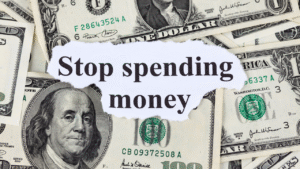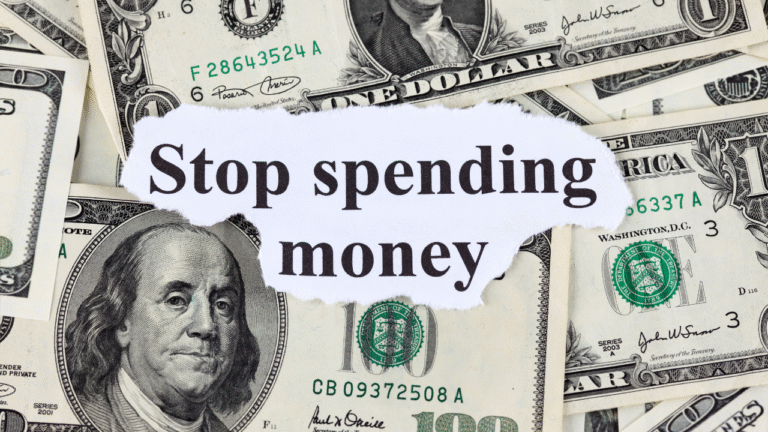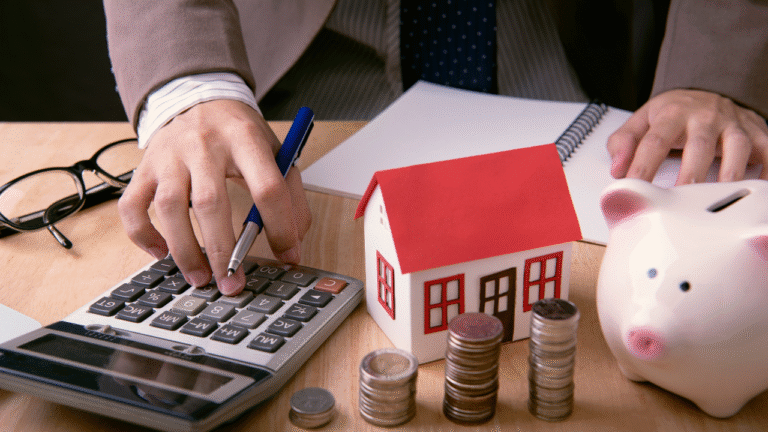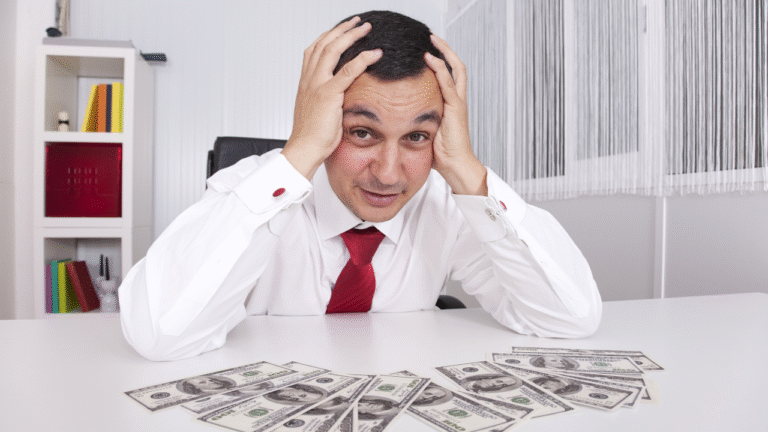Paycheck to Paycheck: How to Finally Break the Cycle in 2025
Living paycheck to paycheck has become the harsh reality for millions of Americans in 2025. Rising rent, higher grocery costs, and mounting debt make it harder than ever to save money. But here’s the truth: you don’t have to stay stuck in this endless loop.
In this guide, we’ll show you how to break the paycheck cycle, stop falling into the paycheck to paycheck trap, and start building financial freedom 💸.
👉 If you’ve ever asked, “Why am I always broke by the end of the month?”, this article is for you.
Table of Contents
📊 The Reality of Living Paycheck to Paycheck in 2025
According to the Federal Reserve’s Report on the Economic Well-Being of U.S. Households, nearly 60% of Americans report struggling with covering expenses, with many households spending more than 30% of their income on housing — far above the affordability benchmark. Add inflation on food, gas, and streaming services, and the paycheck barely stretches until the next one.
But remember: you are not alone. Millions face this, and with the right strategies, you can become no longer paycheck to paycheck.
💡 Why People Get Stuck in the Paycheck to Paycheck Trap

Here are the top reasons many Americans can’t get ahead financially:
- High housing costs 🏠 (rent/mortgage takes most of the income).
- Debt obligations 💳 (credit cards, student loans, BNPL).
- Lifestyle inflation 🍔 (spending rises as income rises).
- Lack of emergency fund ⛑️ (unexpected bills destroy budgets).
- Over-reliance on subscriptions 📺 (streaming, apps, memberships).
👉 Related: Save on Streaming Services
✅ Step 1: Track Your Spending
Before you escape the paycheck to paycheck trap, you need to know where every dollar goes.
- Use free budgeting apps (Mint, YNAB, EveryDollar).
- Track for 30 days — food, transportation, housing, debt, entertainment.
- Identify unnecessary expenses (unused subscriptions, takeout meals, impulse buys).
💡 Pro tip: Compare spending across categories with national averages from U.S. Bureau of Labor Statistics (BLS) Consumer Expenditure Survey.
✅ Step 2: Cut Costs Without Cutting Joy
The fastest way to break the paycheck cycle is trimming expenses wisely.
- Housing: Consider downsizing, finding a roommate, or negotiating rent.
- Travel: Fly on budget-friendly days — check out our guide on Cheapest Days to Fly in the US 2025.
- Shopping: Use seasonal discounts — like the Adidas Summer Blowout Sale 2025.
- Streaming: Switch to budget streaming bundles — Save on Streaming Services.
👉 Cutting 10–15% of expenses can mean the difference between stress and stability.
✅ Step 3: Build an Emergency Fund
An emergency fund ensures you’re no longer paycheck to paycheck when life throws curveballs.
- Start with $1,000 as your first milestone.
- Gradually aim for 3–6 months of expenses.
- Use high-yield savings accounts (HYSA) for safety + interest.
💡 Even saving $10/day adds up to $300/month.
✅ Step 4: Boost Your Income
Cutting expenses isn’t enough — increasing income is how you get ahead.
- Ask for a raise or promotion.
- Freelance gigs (writing, design, delivery apps).
- Passive income streams (affiliate blogs, YouTube, investing).
- Sell unused items on Facebook Marketplace or eBay.
✅ Step 5: Break Free from Debt
Debt keeps you trapped in paycheck cycles. To become no longer paycheck to paycheck, tackle it aggressively.
Two proven methods:
- Debt Snowball: Pay off smallest debts first for motivation.
- Debt Avalanche: Pay high-interest debt first for faster savings.
💡 Example: Paying off a $5,000 credit card at 25% APR saves you $1,250/year.
✅ Step 6: Automate Saving & Investing
Once you free up cash, pay yourself first:
- Automate savings → set transfers right after payday.
- Automate retirement → contribute to 401(k) or IRA.
- Automate investing → even $50/month compounds over time 📈.
📈 The Psychology Behind Money Habits
Breaking free from financial stress isn’t only about math — it’s also about mindset. Many Americans fall into harmful money patterns such as emotional spending, retail therapy, or keeping up with lifestyle trends.
- Scarcity mindset makes people believe they’ll “never have enough,” leading to overspending the moment cash comes in.
- Comparison trap (seeing friends’ vacations or luxury purchases online) fuels lifestyle inflation.
- Fear of missing out (FOMO) keeps people from saving because they don’t want to “miss out” on experiences.
👉 Solution: Practice mindful spending by asking: “Will this purchase help my future self?”
🛑 Mistakes to Avoid

Even with the best plans, many fall back into the cycle. Avoid these traps:
- Relying on credit cards for daily expenses.
- Ignoring insurance (medical, renters, car).
- Chasing “get rich quick” schemes.
- Failing to adjust budget after raises.
🧭 Long-Term Strategies to Stay Free
Escaping the paycheck to paycheck trap is only step one — staying out is step two.
- Keep expenses below income, always.
- Increase savings rate as income rises.
- Invest consistently.
- Protect yourself with insurance + emergency fund.
🏦 Government & Community Resources That Can Help
You don’t have to fight this battle alone. There are U.S. programs and resources designed to ease financial strain:
- Supplemental Nutrition Assistance Program (SNAP) – Helps low-income families afford food.
- Low Income Home Energy Assistance Program (LIHEAP) – Provides support for heating and energy bills.
- Consumer Financial Protection Bureau (CFPB) – Offers free tools on budgeting, debt payoff, and financial education.
- Community non-profits & credit unions – Many offer free financial counseling and debt relief support.
👉 These resources can provide short-term relief while you implement long-term strategies to become no longer paycheck to paycheck.
🙋♂️ FAQs: Paycheck to Paycheck
Q1. Why do I always run out of money before the month ends?
Many households underestimate expenses or face rising costs in housing, food, and debt payments. Tracking spending helps identify the leaks.
Q2. How much of my income should go to rent?
Experts recommend no more than 30% of your gross income. Anything higher often signals financial strain.
Q3. What’s the fastest way to build an emergency fund?
Start small with $500–$1,000, cut unnecessary expenses, and set up automated savings transfers each payday.
Q4. How can I save money if I have debt?
Use the 50/30/20 rule (needs/wants/savings), and tackle debt with methods like the snowball or avalanche approach.
Q5. Is it better to pay off debt or invest first?
High-interest debt (like credit cards) should usually come first. Once that’s under control, start investing for long-term growth.
📝 Conclusion: Time to Break the Cycle

Living paycheck to paycheck doesn’t have to be permanent. By tracking spending, cutting costs, building savings, and boosting income, you can become no longer paycheck to paycheck in 2025.
It won’t happen overnight, but every small step builds momentum. Start today — and give your future self the gift of financial freedom 🎉.
👉 For more money-saving hacks, visit SmartSaveUSA.com and explore guides like:










